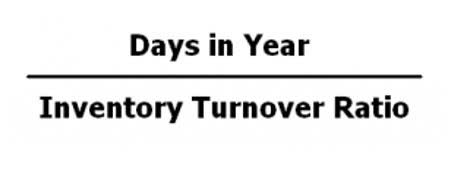
Understanding how EFT payments work is crucial to using these payments successfully. In this article, you will learn what EFT payments are, how they work, and the benefits of EFT payments. Beat bad rates — and cut your international payment costs significantly with Wise. Wire transfers are https://www.bookstime.com/ a fast way to move money from one account to another. We’ll dive into the different types of EFT payments, and what they’re used for, in just a moment.
- Blueprint is an independent publisher and comparison service, not an investment advisor.
- EFT systems use security measures like encryption (scrambling data during transmission) and authentication (verifying your identity) to protect transactions.
- Global ACH payments must also comply with the regulations of the International Organization for Standardization (ISO) and the International Payments Framework Association (IPFA).
- Thus, it is only used to characterize types of payments, and it isn’t actually comparable to any national or cross-border payment technology.
- Bench simplifies your small business accounting by combining intuitive software that automates the busywork with real, professional human support.
Environmental Benefits of Going Paperless
Whether you’re in a small town or a bustling city, you can send and receive funds quickly, without needing to visit a bank branch. These are just a few examples of popular EFT services and platforms available in the market. It’s important to note that the availability of these services may vary depending on the country and the financial institution involved. Users should choose a service or platform that aligns with their specific requirements and offers the desired level of security and convenience for their EFT transactions. In essence, international payments work the same way that local EFT payments do.
Is EFT a bank deposit?
For example, in the United States, they may be referred to as «electronic checks» or «e-checks». Federal regulations like the Electronic Fund Transfer Act (EFTA) help protect businesses and consumers using electronic transfers. what is an eft Some of the federal law’s key safeguards include error-resolution procedures and fraud-protection measures.
- These machines allow EFT payment processing at ATM stations or branch banks.
- The FDIC’s #GetBanked initiative helps people use banking services for EFTs.
- Overall, P2P payments are a very convenient and affordable way to send and receive money electronically.
- The bank then investigates the dispute, typically within 10 business days of being notified.
- It’s not one specific type of payment, but a group of different payment types including card payments, direct deposits and wire transfers.
What is electronic funds transfer (EFT meaning)?
- EFT presents a helpful solution for sending dependable and quick payments on time.
- An EFT is an electronic transfer of money from one bank account to another, meaning there is no need for direct intervention by bank staff.
- An EFT payment describes a generic digital activity that defines several types of electronic payments.
- Businesses often rely on wire transfers for real estate transactions, large purchases, or payments to overseas suppliers, where time sensitivity is critical.
- EFT payments have revolutionized financial transactions by making payments faster, safer, and more convenient for both businesses and individuals.
When you use your credit and debit cards online, you enter the number from these cards into an online payment form, which allows the transaction to be settled automatically. Contributing to this definition is the Electronic Fund Transfer Act from bookkeeping 1978. It was enacted to protect consumers from fraud when transferring funds electronically during the increased use of ATMs in the 1970s.
- The longer explanation is that people are confused because different professions have different names for the same thing.
- Electronic transfers are more secure, since the sender’s tracking and routing number don’t appear to the recipient.
- Business owners can use several types of EFTs to send or receive payments.
- Using third-party entities like EBANX can help you make the right decisions when navigating EFT for your business.
- Wise uses its own payment network, which means when you send money overseas, you can use ACH to transfer the funds to Wise’s USD account with low fees⁴.
- Direct deposit allows businesses to deposit employees’ salaries directly into their bank accounts.
EFTs vs. wire transfers

There are many benefits to using electronic funds transfer (EFT) payments. Perhaps the most obvious benefit is that EFT payments are more efficient than traditional paper-based payment methods. For businesses, this can result in lower costs and improved cash flow. More specifically, an EFT payment is an electronic funds transfer that allows you to pay for goods or services using your bank account. When you make an EFT payment, the funds are transferred from your account to the recipient’s account without needing paper checks or cash. ACH payments—when combined with other payment methods like corporate credit cards and checks—can help businesses manage cash flow.


EFT, or Electronic Funds Transfer, is the digital transfer of money between banks, businesses, and individuals. It covers many common types of digital transactions, such as ACH transfers, direct deposits, debit/credit payments, and online bill payments. Not all EFT payments are processed through the ACH network, but all ACH payments are EFTs. In the United States, the ACH network is the national automated clearing house for electronic funds transfers. It processes financial transactions for consumers, businesses, and federal, state, and local governments. As businesses look for fast, cost-effective ways to transfer money, Electronic Funds Transfers (EFT) have emerged as a top solution.
